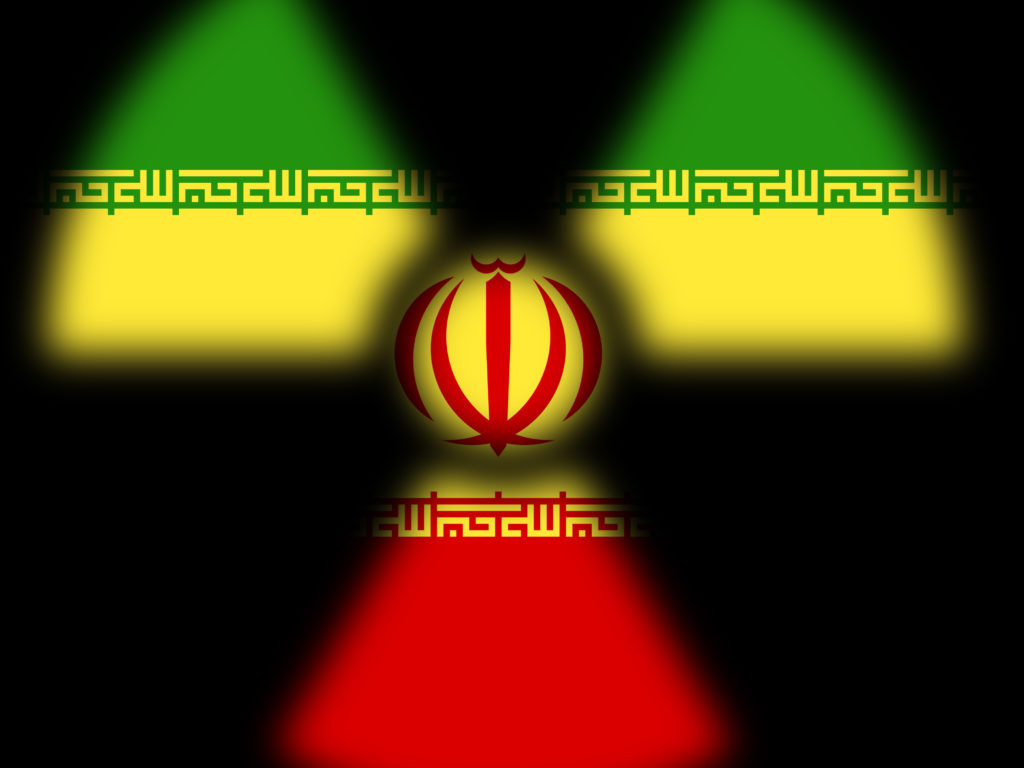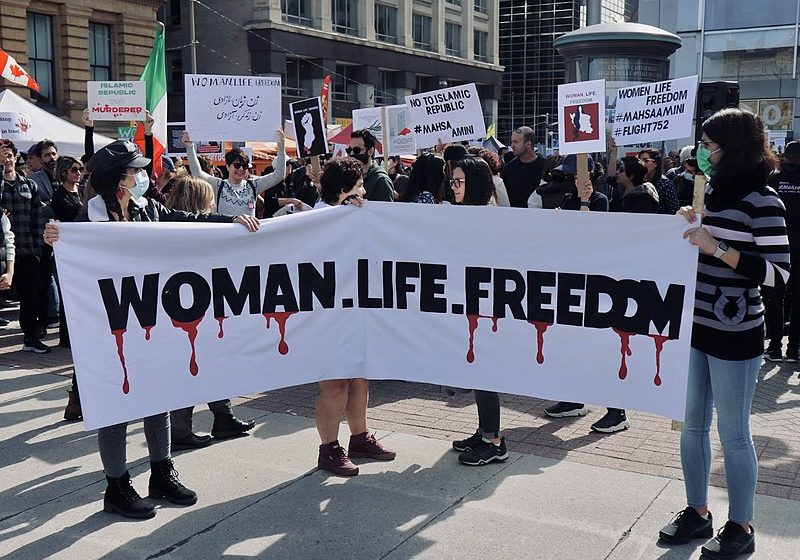Australia/Israel Review
Can Iran be denuclearised?
Aug 25, 2021 | Ran Porat

While negotiations in Vienna between the US and Iran on Iran’s nuclear program appear to be heading nowhere, Teheran keeps edging ever closer to achieving nuclear weapons.
In recent history there are a few examples of countries that were denuclearised, either because they decided to do so or were forced to. What can we learn from these past cases about the chances of denuclearising Iran today?
Is there a way for the international community to force the rogue yet sovereign government in Teheran to abandon what it sees as its nuclear strategic asset – viewed by the regime as an insurance policy safeguarding its survival?
External threats a primary motivator
Except for the first atomic bombs in history, dropped by the US on Japan in 1945 to force its surrender, countries have sought or acquired nuclear weapons mostly to deter external threats. During the Cold War, the US, UK and France feared the Soviets and China, and vice versa, and all ended up with nuclear weapons. In the 1970s, India and Pakistan obtained nuclear weapons to neutralise each other. North Korea (2000s) developed nuclear weapons to counter US power in east Asia. In the late 1970s, South Africa chose to obtain a clandestine nuclear capability after the country’s Apartheid-era white leadership felt isolated and anxious because of developments in neighbouring countries such as Zimbabwe, Angola, Namibia and Mozambique.
The rise of Israel as an alleged nuclear power since the late 1960s – a decision also driven by a strong sense of external threat – was one important factor driving some Arab countries to seek nuclear capabilities. Iraqi dictator Saddam Hussein explained in 1978 that he was building a reactor so “[the Arabs] should have the atom [bomb] …When … they [Israel tells] us, ‘We will hit you with the atom,’ we will say, ‘We will hit you with the atom too.’” Libyan tyrant Muammar Gaddafi also reportedly sought various weapons of mass destruction, including nuclear weapons, from the early 1970s onward in response to Israel’s capabilities.
Denuclearisation successes and failures
International sanctions contributed to, but were not the dominant factor, in South Africa’s choice to relinquish atomic weapons in the early 1990s. That choice was part of an internal process of regime change which concluded with the abolition of Apartheid. Critical to the decision to denuclearise was a diminished external regional threat after a US-brokered settlement of the Angolan War, and Namibian independence.
Libya endured similar sanctions for years yet held firmly to its weapons of mass destruction. Change came only in response to the invasion of Iraq by the US-led coalition in 2003, and the toppling of Saddam Hussein. Fearing a similar fate, Gaddafi renounced and later dismantled his nuclear program. Unfortunately for him, Libya quickly spiralled into civil war and he was removed from power and killed.
Sanctions and negotiations over decades with North Korea, including multiple agreements with Pyongyang, ended in total failure. The Kim family regime used the ongoing negotiations to buy time while progressing with its nuclear and ballistic missile projects. Today this dangerously unpredictable and isolated country is thought to possess several dozen atomic bombs and the means to deliver them as far as the US west coast.
Iran’s religiously inspired drive
We now know that in April 1984, the leader of the Islamic Revolution, Ayatollah Ruhollah Khomeini, gave the order to initiate the Iranian regime’s nuclear weapons project. The reason was again external threats, especially the then ongoing war with Iraq, which saw many international players providing assistance of various sorts to Baghdad. Then Iranian Prime Minister and current Supreme Leader Ali Khamenei explained at the time that the bomb was needed “to secure the very essence of the Islamic Revolution from the schemes of its enemies, especially the United States and Israel.”
Khamenei also added that Iran requires nuclear weapons to “prepare it for the emergence of the Imam Mahdi [Islam’s Messiah]”. His words reveal the uniqueness of Teheran’s drive to the bomb – religious beliefs. The regime believes that the bomb will facilitate the export of the revolution and eventually lead to a Shi’ite revival as Islam’s leading force, as believed to be promised by God.
Diplomacy in the form of sanctions, negotiations and agreements was the main strategy applied by the international community to tackle the Iranian challenge, including especially its nuclear aspect. The 2015 nuclear deal (the “Joint Comprehensive Plan of Action” or JCPOA) was the crown jewel in a long series of agreements with Iran, in which Teheran agreed to decelerate parts of its open nuclear program and facilitate tougher inspection of it in exchange for the easing of sanctions.
Why did the combined diplomatic approach fail to curb Iran, now potentially only a few months from becoming a nuclear threshold state?
The fundamentalist Iranian elite view engagement by the West as a sign of weakness, discouraging Teheran from making meaningful concessions to infidel countries that they are convinced are implacable enemies. The ayatollahs choose instead to employ both defiance and deceit. They breached all nuclear agreements, pushing forward at varying pace towards their goal, while misleading and undermining UN monitoring of their activities.
Responding to sanctions, Teheran’s strategy is attempting to construct a “resistance economy” to maintain self-sufficiency without foreign trade or aid. This strategy of course does not apply to the regime’s corrupt elite, which enjoys riches at the expense of the Iranian people, who suffer increasing distress from the impact of sanctions.
Threats to the regime remain high
The Libyan and South African cases teach us that governments opt to relinquish their nuclear option only when one of two preconditions exist: either the leadership believes the threat to its existence is significantly diminished; or international pressure looks likely to lead to imminent regime change.
In 2021, the level of external threat to the Iranian regime remains high – or at least so it must appear from Teheran. The US, along with Iran’s arch-enemies Israel and Saudi Arabia, lead a camp of Middle Eastern allies working together against Iran and its proxies. Teheran is fuelling these tensions, with attacks and proliferation of terror and radical ideologies directly or via proxies (Hezbollah, Hamas, the Houthis, and various Shi’ite militias for example). Furthermore, internal discontent in Iran has been increasing as the people suffer under oppression, an ailing economy, water and food shortages, corruption and mismanagement.
The rigged election of Ebrahim Raisi, executioner of his own people, as president has completed the transformation of Iran’s regime into an extremist government controlled by the Islamic Revolutionary Guard Corps. With even the pretence of competitive democracy now largely dispensed with, these elements must maintain a focus on external threats as the only justification for their cruel grip on power. Their lesson from the toppling of Saddam and Gaddafi after they gave up their nuclear weapons efforts is that the Iranian regime must avoid such a move lest it face a similar fate.
Israel, with the help of the US (and others?) has sought an alternative to diplomacy by embarking on an unprecedented sabotage campaign to derail Iran’s nuclear program. Mysterious explosions, cyber-attacks, killing of scientists and leading figures in the project were employed to hopefully slow down Iran’s progress toward bombmaking. These efforts appear to have at least helped ensure that even after four decades, the Iranians have yet to build a functioning nuclear warhead. This campaign, however, is perceived in Teheran as yet another strategic threat.
Israel is the only country to have successfully defused emerging nuclear threats by deploying military force – destroying Iraq’s Osirak nuclear reactor in June 1981, and Syria’s secret Al Kibar reactor in September 2007. But the military option in Iran’s case is much more complex, making the efficacy of any potential attack questionable. The Iranian weapons project is very advanced, facilities are spread across the country, often dug in deep underground, and well protected. Moreover, the relevant nuclear knowledge accumulated by Iran’s scientists cannot be erased militarily. Teheran’s response to any such operation is expected to be fierce, causing major damage to Israel and possibly other Middle Eastern countries.
A US-led attack on the nuclear program might have greater prospects of success, but this looks extremely unlikely any time soon.
The dire conclusion must be that without regime change, or at least the serious threat of regime change, in Teheran – both also appearing unlikely – the world can soon expect to witness the emergence of Iran as the newest addition to the club of nuclear powers (or at least a threshold nuclear state).
This conclusion requires a shift in the discourse among international policy makers. Unless they are prepared to discuss coercive measures so fierce that Iran’s ruling clerics are forced to concede that they must make major nuclear concessions to preserve the regime’s existence, the world will have to stop thinking about “how to stop Iran from going nuclear” and focus instead on “how to contain and deal with nuclear Iran.”






